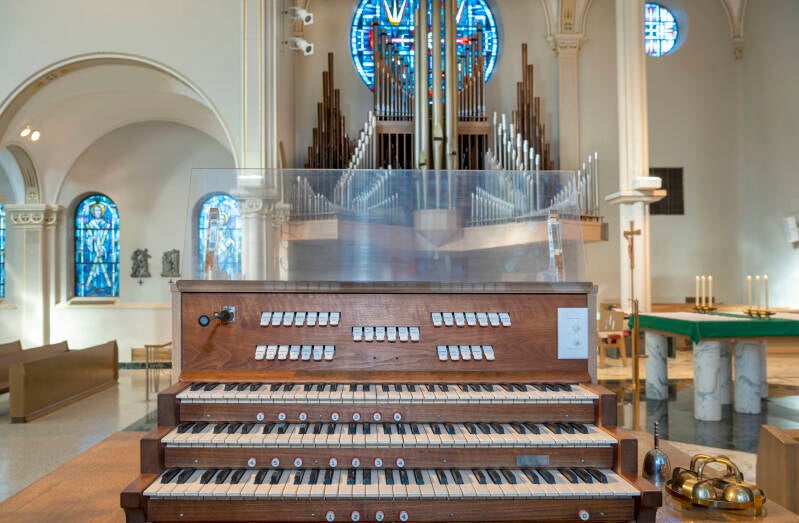The Assumption Chapel
All photos on this page are curtesy of Tony Dugal.
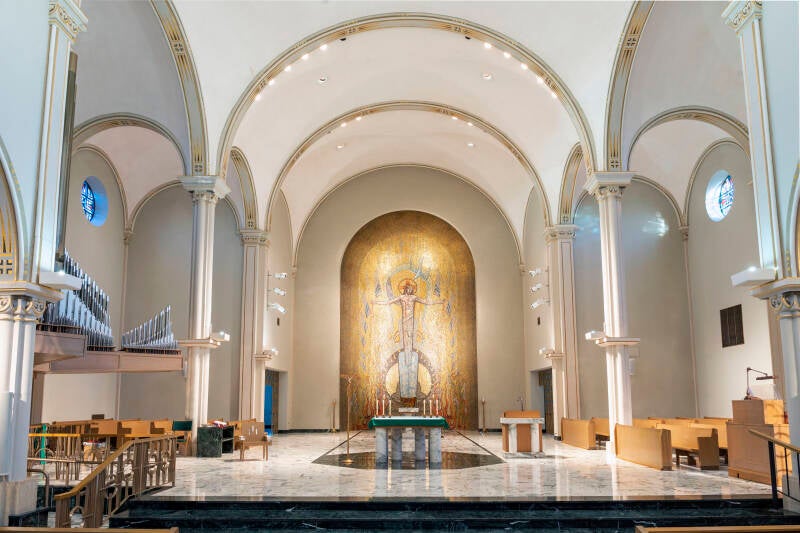
The Chapel of the Assumption was built in 1906 to meet the growing needs of the Missionaries of the Precious Blood and the community at St. Charles Seminary. Until the main building was constructed in 1922, the chapel was a separate building from the rest of the St. Charles Seminary building.
The Chapel was constructed in the Romanesque style, with rounded arches and windows. The church is cruciform – cross shaped. Originally, the sanctuary was much smaller, and the steps into it were one arch closer to the wall where the mosaic is now located.
In 1960-61, the chapel was renovated. The walls and ceiling, which had been covered by paintings, were cleared and painted white with gold and black trim, much as you see it today. New windows were installed, as well as a new pipe organ. The size of the sanctuary increased, and the sanctuary floor was covered in marble. A new free-standing marble altar replaced the wooden one that had been against the back wall. The altar was white marble on a black marble platform, three steps above the sanctuary floor. New pews were installed on a new terrazzo floor.
In 2009-10, additional renovations were done, lowering the altar to its current location, making it more accessible for our senior priests and closer to the assembly, as well. A ramp was installed to allow those who are handicapped to approach the altar area, too. The ceiling was coated with a special plaster that improved the sound so that both music and the spoken word could be more easily understood. The organ console was also relocated so that it was closer to the new altar.
The Doors
The first thing you see as you approach the chapel are the two sets of glass doors with their fish shaped handles and sketches of a fishing net. These doors remind all who enter that we are all called, like the first disciples, to be fishers of men and women. We are all called to bring others to Christ.
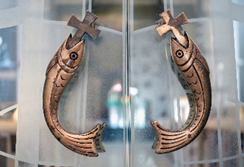


As you pass through the first set of doors, there are two statues in the chapel lobby. On the right is the statue of St. Maria de Matias, founder of the Adorers of the Blood of Christ, one of the sister communities of the Missionaries of the Precious Blood. On the left is the statue of St. Francis Xavier, patron of the Missionaries of the Precious Blood. St. Gaspar grew up near the Church of the Gesu where there is a large relic and altar dedicated to him, and St. Gaspar had a special devotion to him as a preacher and missionary.
The Mosaic
The mosaic was designed and constructed in Germany and then installed in the Chapel. A closer look at the mosaic shows the many meanings of the magnificent piece of art. Jesus is dying on the cross, rising from the dead and ascending into heaven all at the same time. The mountain is Mount Sinai, where Moses received the ten commandments, but it is also Mount Zion, where the temple of God once stood. It is Golgotha, where Jesus was crucified, and the mount of the ascension, where Jesus departed and returned to the heavenly realms.
Toward the top of the mosaic, the hand of God – a symbol of the Father – and a dove – a symbol of the Holy Spirit – appear near the head of Jesus, thus symbolizing the Trinity. Angels surround Jesus, blasting their trumpets, as in John’s vision in the book of Revelations. On the left, near the bottom, we see Melchizedek, as he offers a thanksgiving sacrifice to God, and the three strangers who visit Abraham and Sarah announcing that a child will be born to them within the coming year. On the right side is the image of Abraham as he prepares to offer his son, Isaac, as a sacrifice to God, only to be stopped by the hand of an angel and shown a ram stuck in a bush which would be a more appropriate sacrifice.
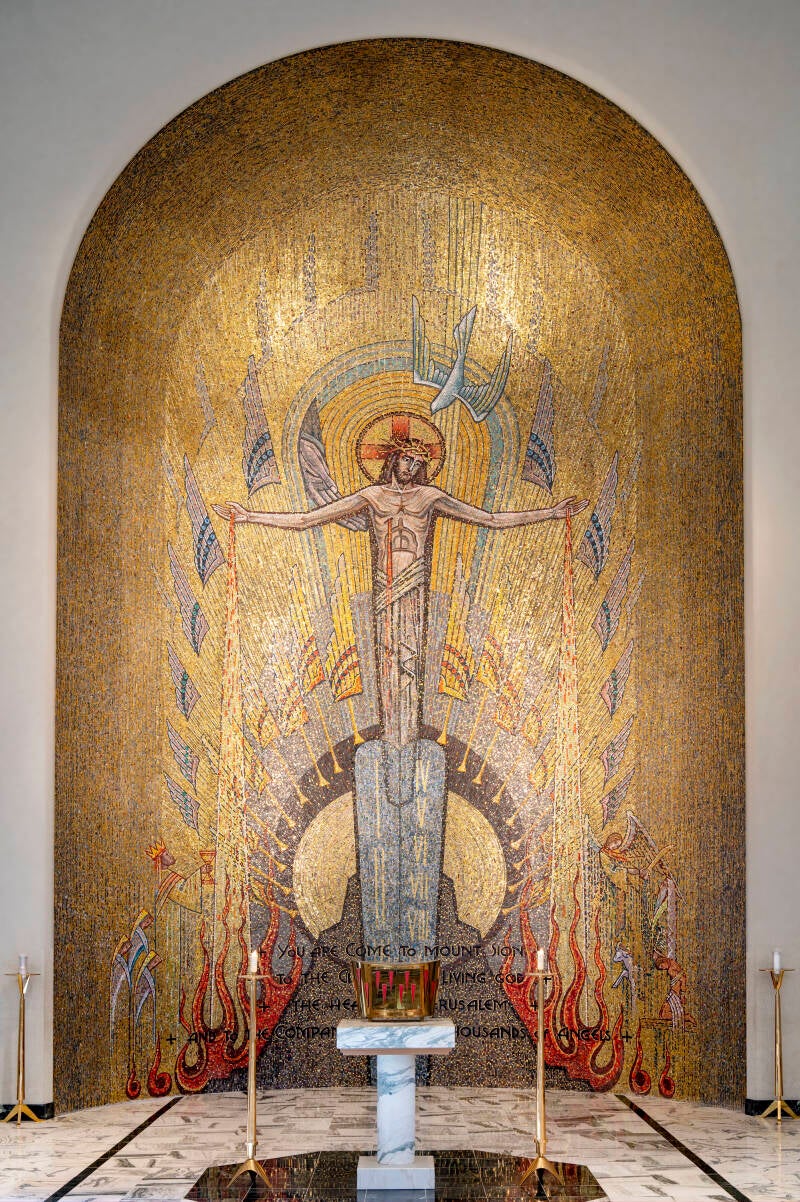
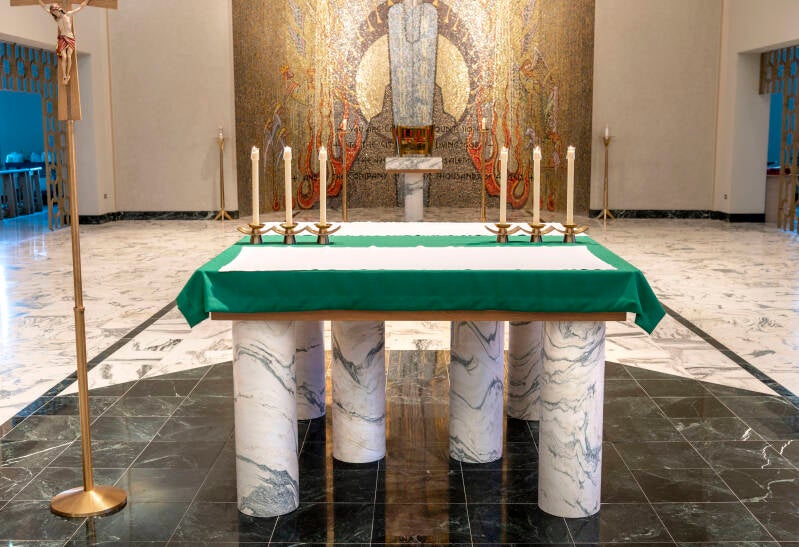
The Altar
The altar is square with six marble pillars. The marble was quarried in Italy. The current altar is made from parts of the 1961 altar, which was rectangular, stood on a platform an additional three steps above the sanctuary floor. The relics of several martyrs are enclosed within the altar. The square shape allows the priest to stand on any side of the altar so that he may face the people when only a smaller number are present and all are seated in the side pews.
The Ambo
The ambo or pulpit is made of wood to match the pews and marble from the 1961 altar to match the new altar (2010). The new ambo was designed to provide additional dignity to the place where the Word of God is proclaimed. The reading table for the Lectionary and the Book of the Gospels can be lowered to allow those in wheelchairs to proclaim the Word of God.
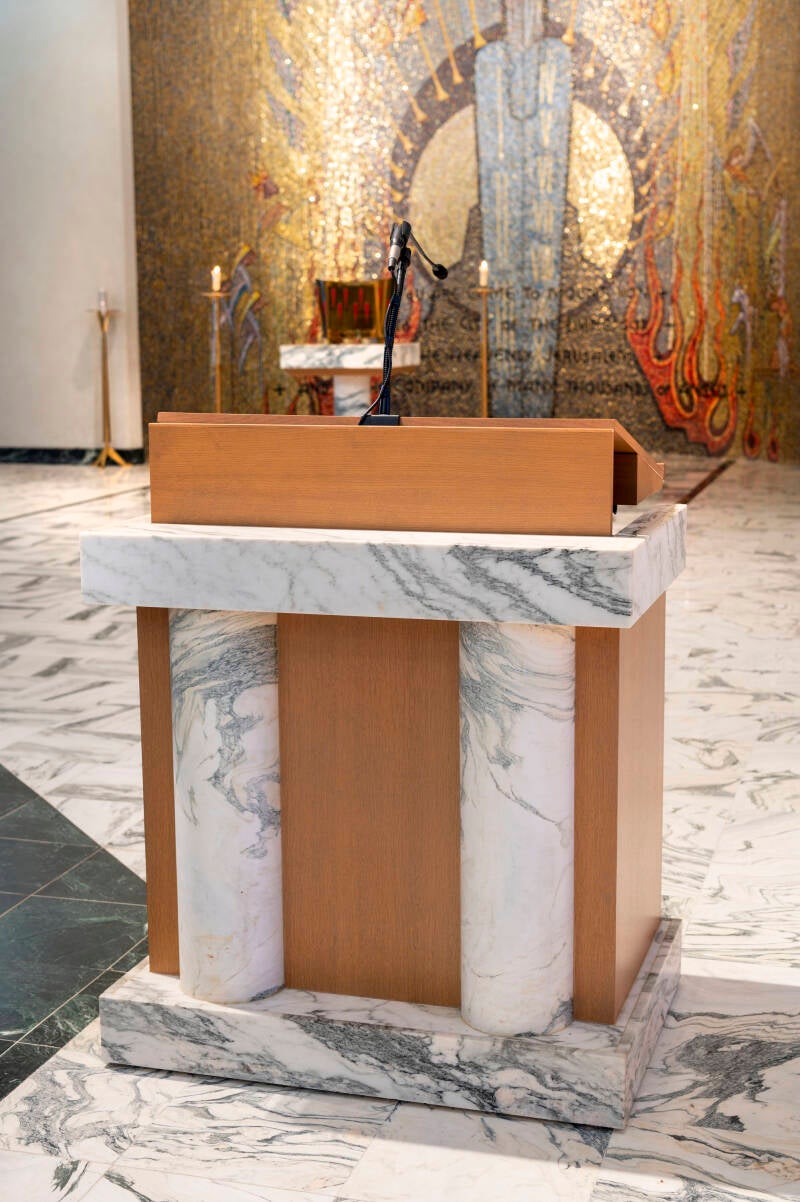
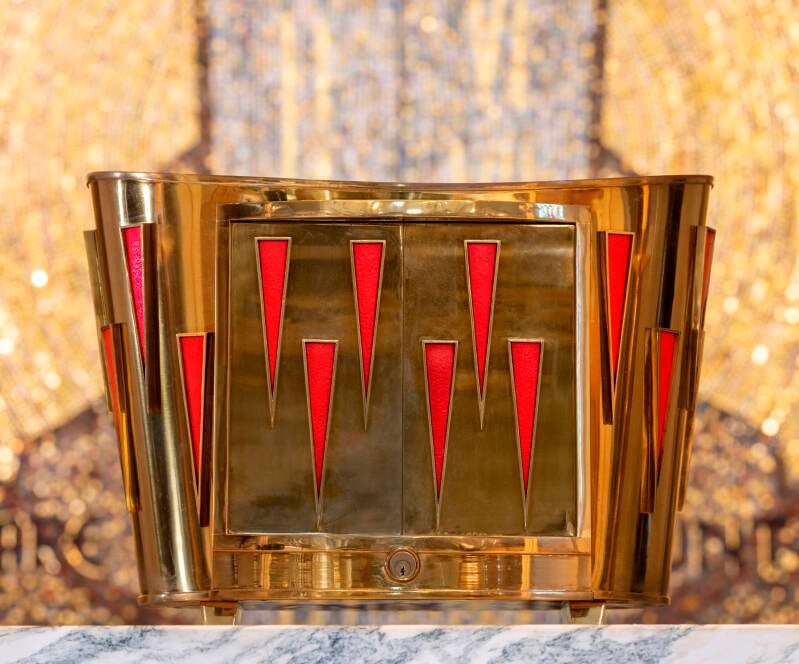
The Tabernacle
The Blessed Sacrament is reserved for adoration and communion to the sick in a brass tabernacle made for the 1961 renovations. It sits on a small marble square which rests on a single marble pillar. The red triangles represent drops of blood shed by the Lord for our salvation.
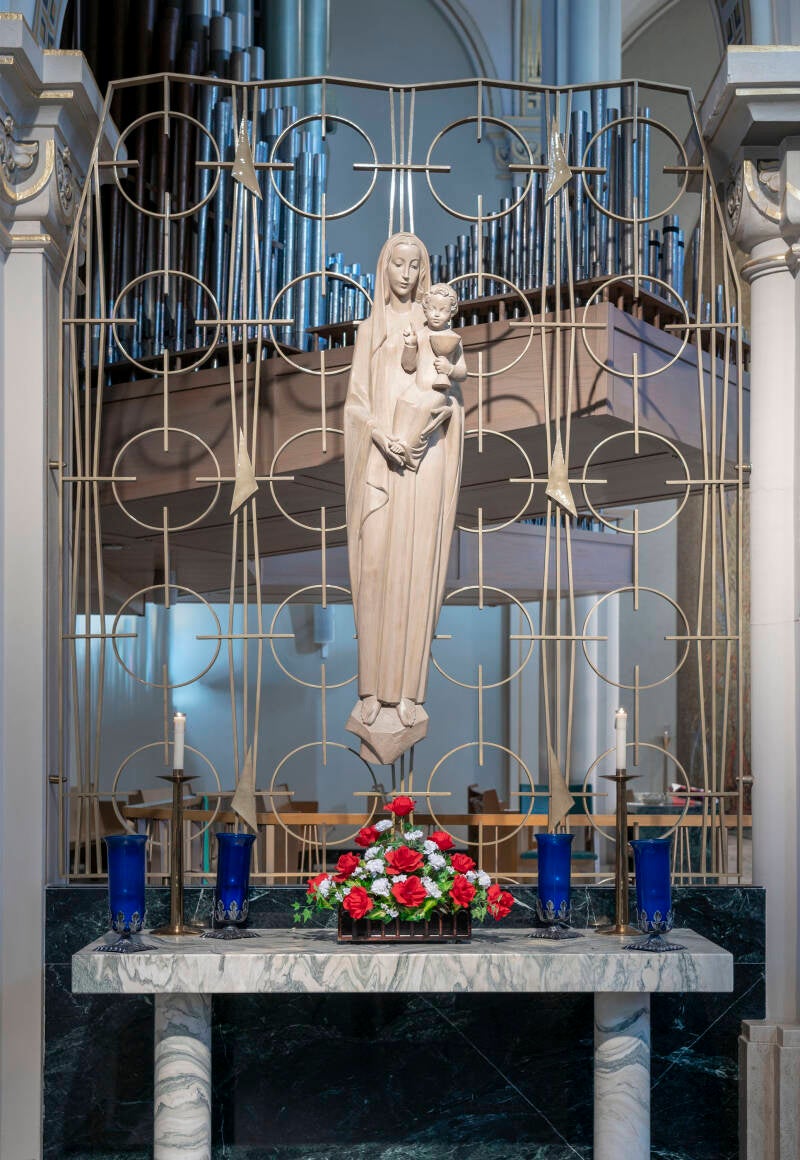
Side Altars
On the left side of the nave is an altar to honor the Blessed Mother. On the right is an altar honoring St. Gaspar del Bufalo, the founder of the Missionaries of the Precious Blood, who had been canonized in 1954. A relic – bone from the arm of St. Gaspar – rests on the altar, as well – a reminder that St. Gaspar is with his community even here and now.
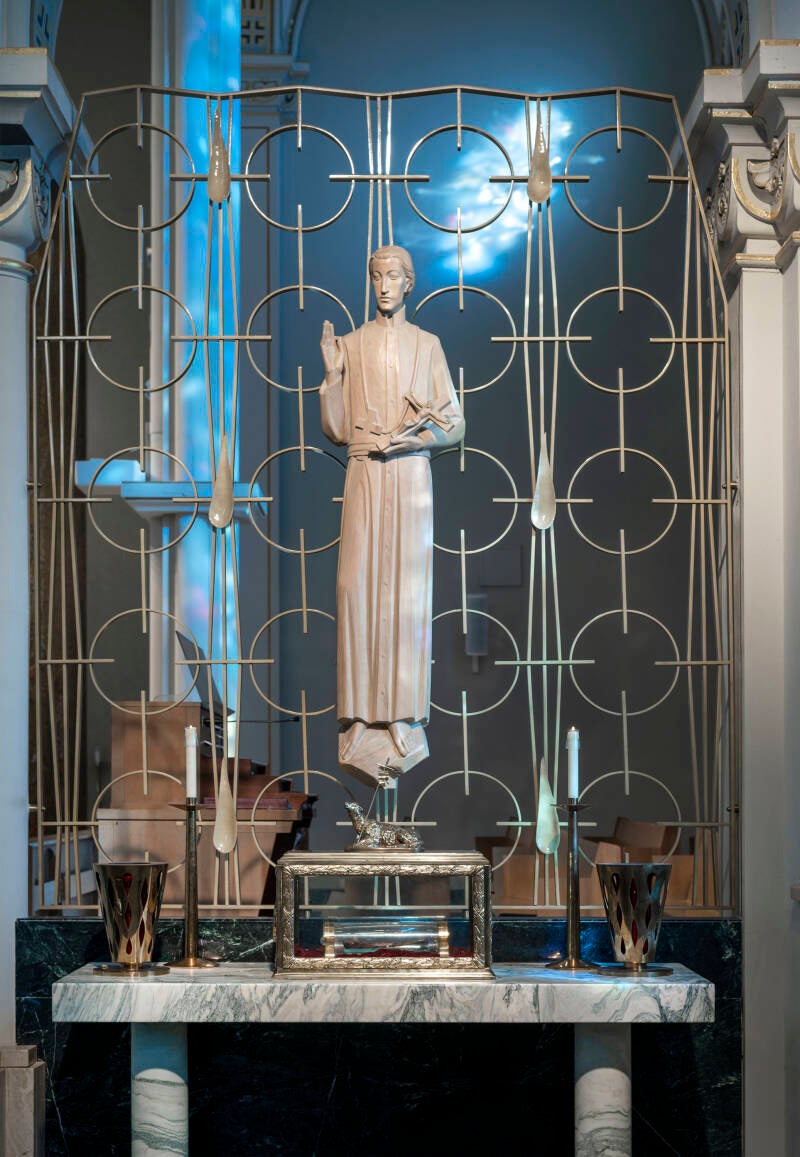
The Stain Glass Windows
The windows on either side of the nave depict the twelve apostles. Closer to the ceiling, there are a number of round windows with a cross motif. In the sanctuary, on the right side of the chapel is the majestic Assumption window, depicting Mary as she is raised heavenward.

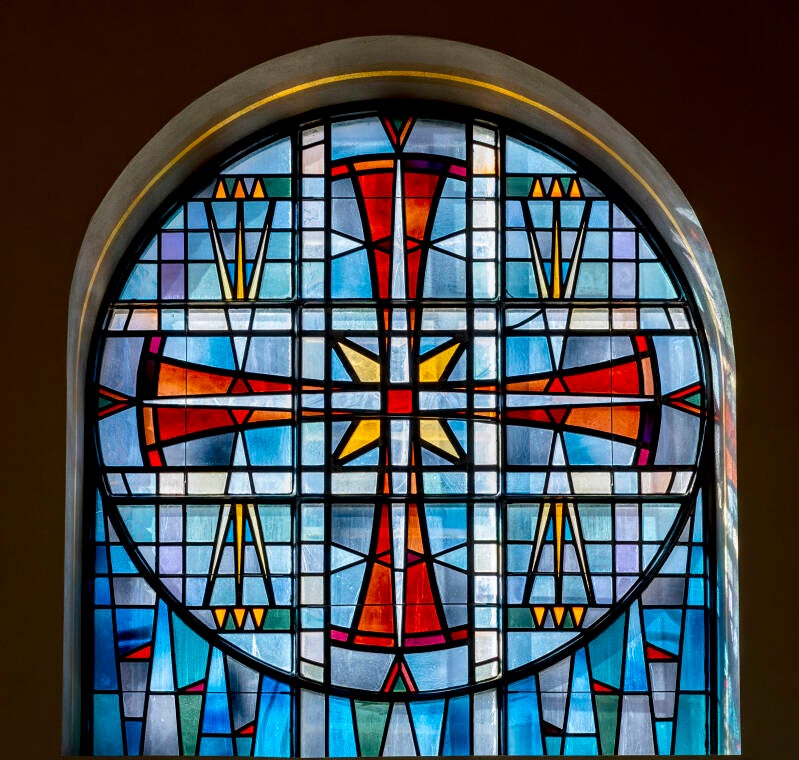
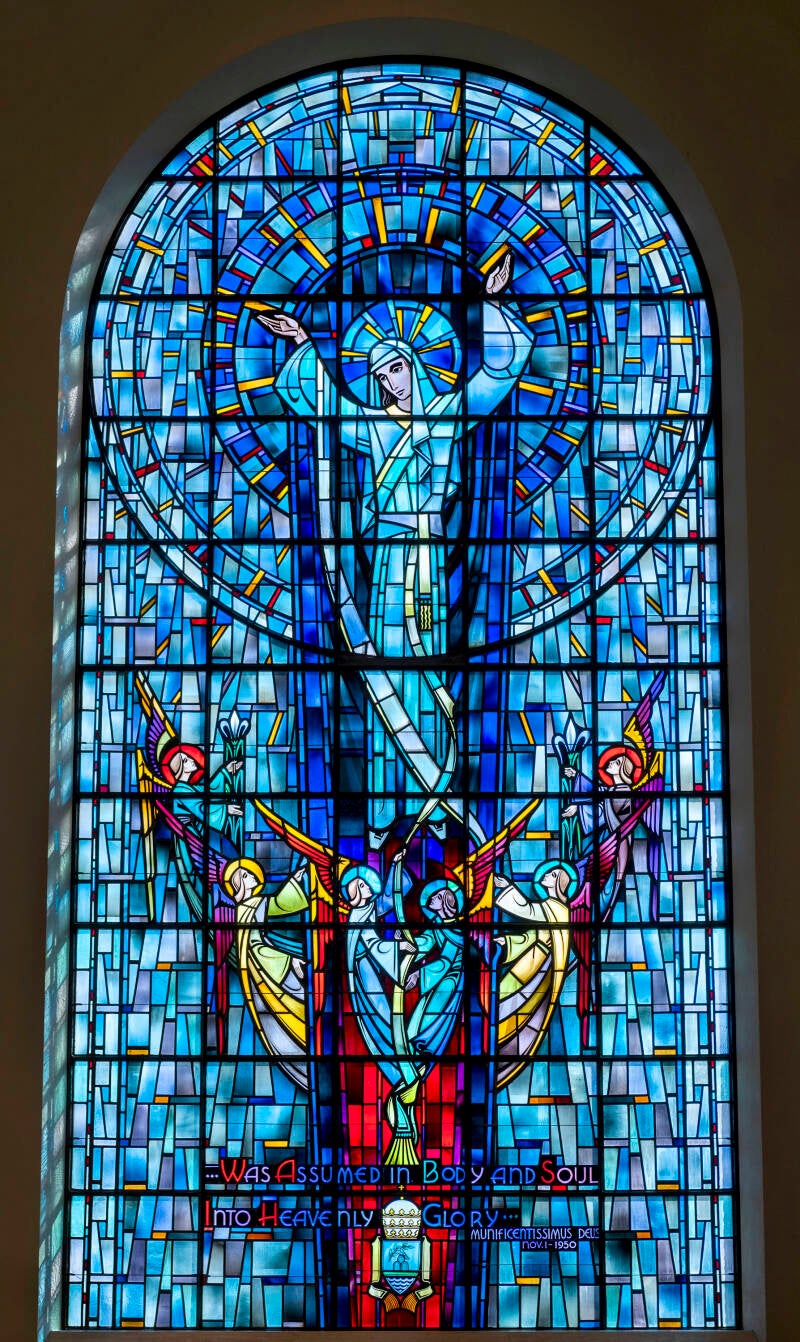
The Way of the Cross
The fourteen stations of the cross tell the story of the passion, death and burial of Jesus. They are pewter in color and are located between the widows dedicated to the twelve apostles.
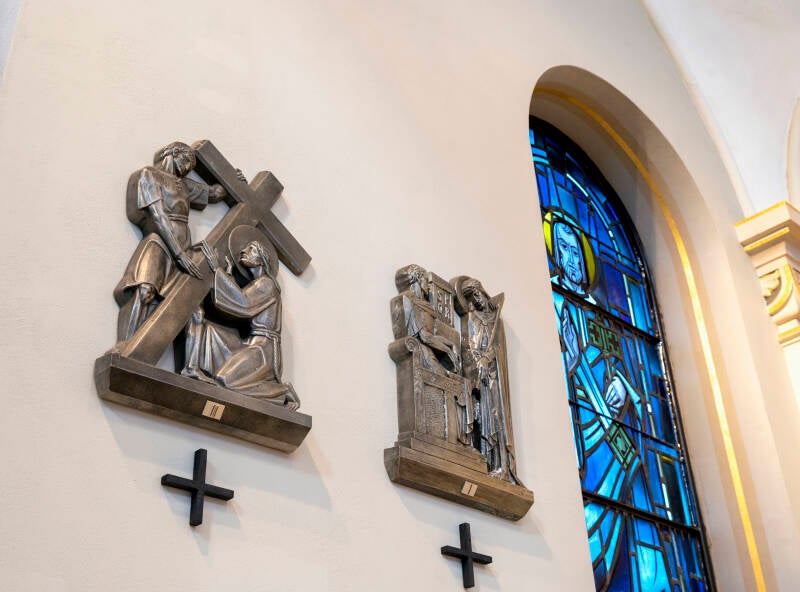
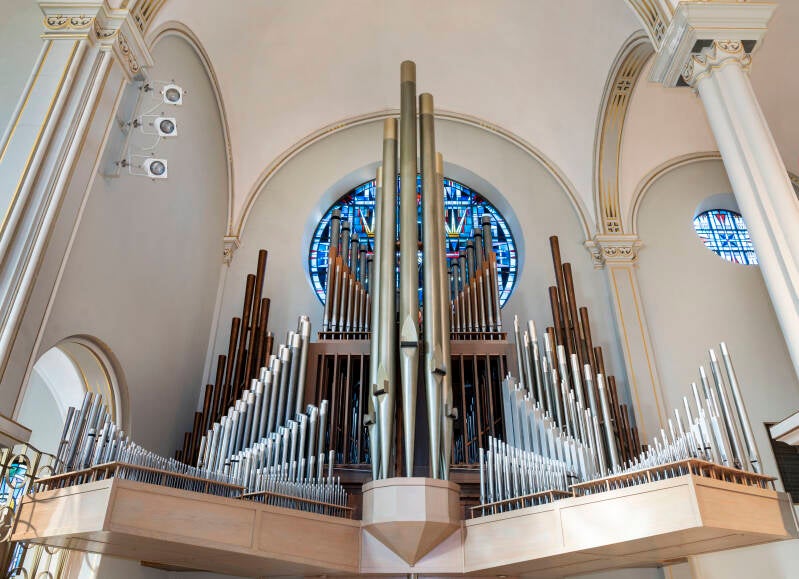
The Organ
The Holtkamp Organ Company of Cleveland, OH, built this organ in 1961 specifically for the Assumption Chapel. The organ has three manuals, four divisions and twenty-six ranks of pipes, most of which are exposed. The Organ Historical Society has declared it to be a historic instrument since it is the last organ designed by Walter Holtkamp himself.
The console for the organ is located across the sanctuary from the organ pipes, while the blower and cables that connect the organ console and the pipes are under the chapel.
